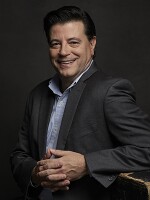Governor Dannel Malloy's proposal to change the traditional handicapped symbol had its first public hearing Monday in Hartford. Disability rights advocates are divided on the issue.
The new symbol is still a white stick figure in a wheelchair on a blue background. But now the stick figure is leaning forward, arms bent back like a wheelchair racer in motion.
"It focuses attention on the wheelchair instead of the person," said Stephen Morris, the executive director of The Arc of Farmington Valley, or Favarh. Morris said the new sign suggests independence and engagement. "It's just a more positive image of a person with an accessibility need."
But not all disability rights advocates agree.
Cathy Ludlum, who suffers from a neuromuscular disorder and is confined to a powered wheelchair, testified before the General Assembly's Government Administration and Election Commission that the new symbol carelessly divides the disabled community.
"It splits between people who want to show success through motion, and those of us who do not push our own wheelchairs, and therefore feel criticized by the symbol that should empower us," said Ludlum.
Committee members also expressed concern that the new symbol would be confusing for visitors to the state -- especially tourists from other countries, where the traditional handicapped symbol is universally recognized.
The new signs would not come at any additional cost to the state. They would be installed only for new construction, or when an old sign needs to be replaced.
The bill also calls for a change on parking signs from "handicapped parking permit required" to "reserved parking permit required," a change advocates said will help change the public's perception of people with disabilities.
If the legislature approves the measure, Connecticut would be the second state behind New York to adopt the new symbol.


